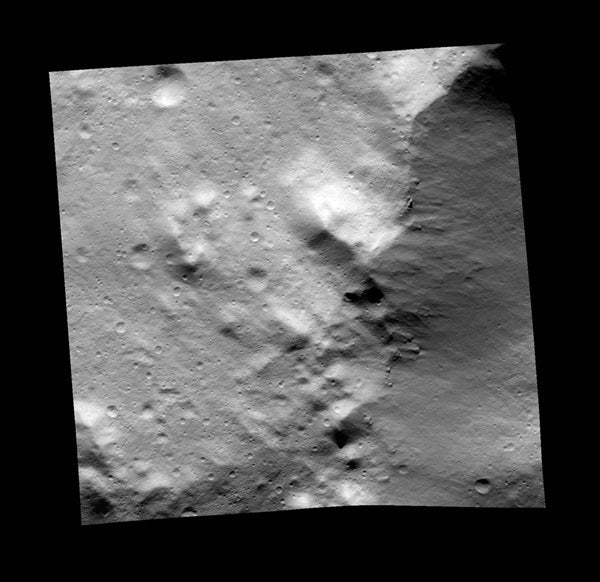The NASA Dawn spacecraft has been acquiring science data in orbit around Vesta since July 2011. In December, Dawn reached its lowest altitude orbit with an average distance of about 130 miles (210 kilometers) from Vesta’s surface. Vesta’s diameter is about 330 miles (530km), just a little bit larger than the width of Arizona. Dawn plans to stay in this orbit for 110 days before ascending to higher altitudes and departing to its next destination, the dwarf planet Ceres.
At low altitudes, GRaND is detecting strong neutron and gamma-ray signals that scientists will analyze to map the elemental composition of the entire surface of Vesta, Prettyman said. Unlike Dawn’s framing camera and visible and infrared mapping spectrometer, GRaND can see in the dark, Prettyman added. Consequently, GRaND is sensitive to the composition of Vesta’s surface at high northern latitudes, presently in polar night.
GRaND measures the abundance of elements found in planetary surfaces, such as hydrogen (H), iron (Fe), magnesium (Mg), and silicon (Si). The data will help scientists determine how hydrogen was delivered to the surface of Vesta — for example, by the solar wind or by carbon-rich materials hitting the asteroid. Measurements of rock-forming elements, including Fe, Mg, and Si, will help them understand the volcanic processes that shaped Vesta.
After five weeks of mapping in the spacecraft’s low-altitude orbit, global-scale variations in Vesta’s elemental composition are apparent, Prettyman said. Vesta’s varied surface distinguishes it from smaller asteroids, which are typically uniform in composition. Vesta, which underwent complex geochemical processes, forming a core, mantle, and crust, seems more like a terrestrial planet than an asteroid.
GRaND’s initial observations are tantalizing; however, their interpretation will require additional accumulation of data and further analysis by Dawn’s Geochemistry Team. First results will be reported soon after mapping at low altitudes is complete.











